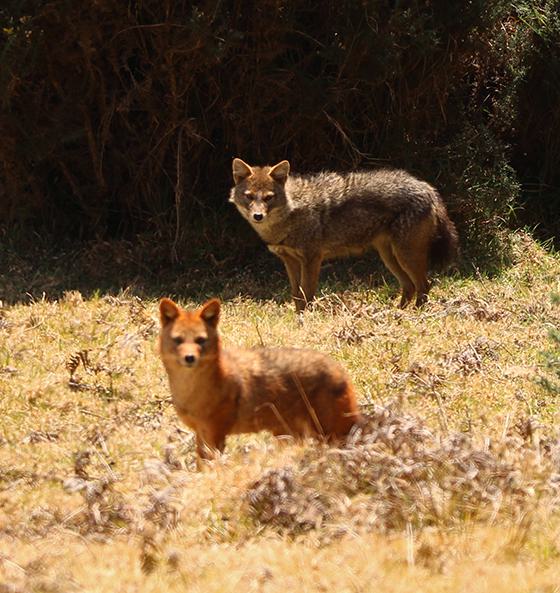Golden Jackal

- 30 Jul 2025
In News:
A recent citizen science study conducted by the Aranyakam Nature Foundation estimates that Kerala is home to approximately 20,000 to 30,000 golden jackals (Canis aureus naria), highlighting the species' wide distribution and adaptability across the state’s diverse landscapes.
Key Ecological Facts
- Scientific Name: Canis aureus
- Common Names: Golden Jackal, Common Jackal
- Physical Appearance: Medium-sized canid, smaller than a wolf and larger than a fox; coat ranges from golden to pale brown, varying seasonally.
- Behaviour: Primarily nocturnal in human-dominated areas; lives in monogamous pairs, often uses burrows or rock crevices for shelter.
- Diet: Omnivorous; consumes small mammals, birds, fish, insects, hares, fruits, and is known to scavenge near human settlements.
Habitat and Distribution
- Found in South, Southeast, and Central Asia, extending into Southeastern Europe and North-East Africa.
- In India, widespread from the Himalayan foothills to the Western Ghats, including Kerala, Maharashtra, Rajasthan, and Haryana.
- Preferred Habitats: Open lowland regions, especially below 200m elevation. In Kerala:
- Coconut groves (24%)
- Rural settlements (10%)
- Urban areas (5.6%)
- Rare in protected forest areas (only 2% of sightings)
Key Findings from Kerala Study
- Over 5,000 sightings were recorded across 874 villages, involving 2,200+ participants.
- High adaptability to human-modified landscapes such as peri-urban zones and coastal belts.
- Ecological Concerns:
- Rising cases of poultry predation
- Risk of rabies transmission
- Increasing dependence on organic waste, especially near coastlines
- Threat of hybridisation with stray dogs, posing genetic risks
Conservation Status
- IUCN Red List: Least Concern
- CITES: Appendix III
- Wildlife Protection Act, 1972 (India): Schedule I (highest protection under Indian law)
